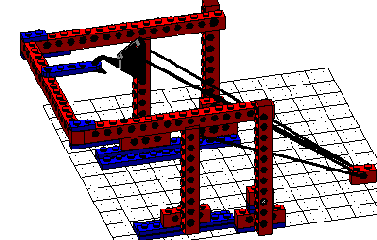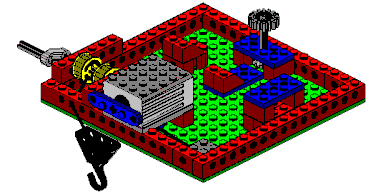
CELs - Technological Literacy [TL]
Return to Main
The goal of incorporating Technological Literacy into Saskatchewan's Drafting 10 curricula is to develop individuals who understand how technology, specifically various CAD applications, are used as a tool to meet the aims and objectives of Drafting. Many changes have occurred in society as a result of advances in science and technology. One of these changes has been in the Drafting field of study. Computer Aided Design ( CAD ) is now playing a vital role in shaping the learning of those employed in this sector. This technology is allowing the designer to extend human capabilities. This is evident in the use of animation software in the production of feature films such as Terminator, Predator, The Lion King, Toy Story, etc. Another example would be in the application of virtual reality in architecture and the ability for home designers or buyers to take a virtual tour of the home they are designing. This has placed tremendous onus on teachers to try and include the use of some technology application into the programs they offer, whether it be a program like computer production technology, drafting , textile design or others which have now have technology demands placed on them.
Technology is more than the " hardware " students use, it includes the " know how" in applying the concepts of technology in a rational effort to solve definable problems. This application may be as simple as applying the software application to a given drawing in Drafting or it may be much more complex in using a software application to enhance space vehicle design at NASA or with the Naval Surface Warfare Center who use virtual prototyping software in developing models of mine countermeasure systems to neutralize mines in the surf zone. Engineers can perform full scale test correlation's using these complex models which include elements like crosswinds and rough sea conditions that would exist in real world operating conditions. This ensures safer conditions in which all naval personnel require and appreciate.
At what age is it appropriate to introduce CAD into the classroom? Age appropriate CAD occurs as a result of teacher training, their experiences and willingness to design programs which allows student involvement in these software programs. For example The 5th grade class at Davis Creek Elementary in Barboursville, W.V., under the guidance of Linda Hamilton, created a project whereby the students, working in teams of two, built lego models depicting how they would survive after being shipwrecked and stranded and left alone to fend for themselves on an island. Here is an example of some of the lego models.

Food Trap

Raft
For more examples click on projects.
It is obvious that these students have become very technologically literate through the work and designs they have accomplished within the framework of the objectives the instructor has outlined. The project also included economic, political and social environments. No two projects were the same. They realized in order to survive they needed water ( water well ), food (food trap, food picker), shelter ( shelter ), a way of possibly being saved ( SOS ). These students weren't only involved in the design application of CAD they also were involved in making socio/economic decisions. They collected data, decided who would build which project, what were the necessary elements for survival. These are extremely important decision making skills centered on social issues and a perfect example of how technology, specifically CAD, can enhance the classroom and more importantly the learners ability to be more technologically literate.
Last Updated June 12/2001